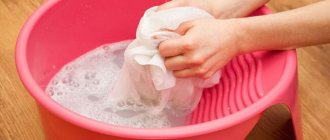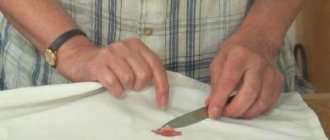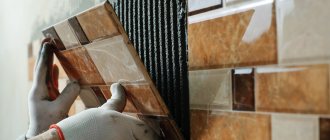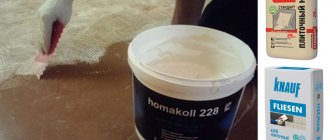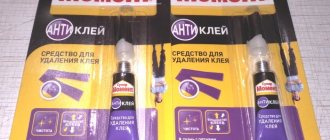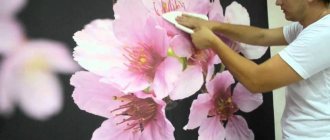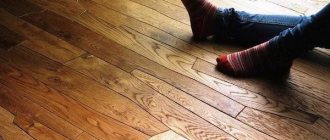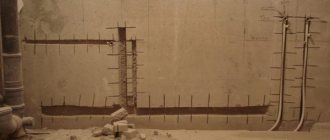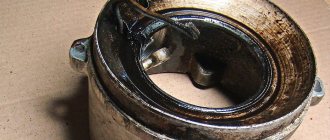The polyvinyl acetate composition gives good results when gluing various surfaces, so getting it on the fabric can lead to damage to the item.
To effectively deal with unwanted traces, you can use home recipes or use special products.
In this article we will tell you how to remove PVA glue from clothes at home.
How to remove fresh stains?
It is easiest to deal with a fresh stain when a white drop has not yet hardened on the surface of the fabric. In this case, you will have to act quite quickly. The method of getting rid of contamination should take into account the composition of the glue.
of PVA are:
- water emulsion of polyvinyl acetate;
- plasticizing additives.
Washing procedure:
Remove the bulk of the glue from the material with a napkin or rag. You need to work with blotting movements so as not to smear the stain even more.- If possible, remove any remaining product with a sharp tool using scraping movements, moving from the edges to the center. It is better not to experiment with such processing with delicate materials.
- Hold the stained area of fabric under running water, directing it so that the stain is washed.
- In a separate container, dilute the detergent (gel, grated laundry soap or powder) in warm water.
- Dip the item into the washing solution.
- Leave for about half an hour.
- Rub the affected area.
- Wash the product in any convenient way.
Intense exposure should be avoided so as not to damage the tissue itself.
How to remove it at home?
If the PVA stain was not noticed immediately, you will have to use more serious methods to eliminate it. In the case where the trace of glue remains voluminous, you must first try to remove the bulk of the frozen substance.
To do this, you can try to carefully scrape off the frozen glue from the fabric with a non-sharp object, using a wooden or metal object.
If the fabric cannot withstand such treatment, then it is better to use soda:
- wet and squeeze out the sponge;
- dip a washcloth in soda;
- working from the edges of the stain towards the center, rub the area;
- stand for half an hour;
- wash the damaged area of the item first;
- wash the entire product.
It is recommended to take into account the brand of glue, since its construction varieties have greater durability and better adhesive ability compared to stationery ones.
Vinegar
Table vinegar will help to deal with old glue stains. This method can be helpful for cleaning thin fabrics, such as chiffon.
Application:
- Lay out the product horizontally.
- Soak a sponge in vinegar.
- Place a sponge on the stained area.
- Allow the time necessary for the reaction to occur, as a result of which the PVA film begins to wrinkle.
- Carefully remove the glue.
- Wash the product.
Vinegar tends to discolor fabrics, so this method may not be suitable for bright materials or those with prints.
Alcohol
Before removing traces of glue, the item should be turned inside out. Operating procedure:
- place the item on a horizontal plane;
- Place a sheet of cardboard under the area to be treated - this will prevent the stain from moving to the other side;
- moisten a cotton sponge or swab in alcohol or vodka;
- Treat the stain with blotting movements, ensuring that the dried glue dissolves;
- wash as usual.
The use of alcohol is indicated for linen, cotton, and denim fabrics. Read about removing glue stains from jeans here.
Iron
Exposure to high temperatures helps remove the adhesive from the material. It is convenient to use a regular iron for this.
Work order:
- The item with the stain is placed on the ironing board.
- Place a piece of white cotton cloth over the stain.
- From the inside, fabric is also placed under the product.
- Iron it, trying to get the glue absorbed into the additional fabric.
- Wash using powder or gel.
If you don’t have an iron at hand, you can use a hairdryer set to hot air.
Ammonia
Ammonia as a cleaner can be used either independently or in addition to another type of treatment, for example, steam.
Moisten the sponge with ammonia and achieve good hydration of the stain by applying it for a quarter of an hour. The remaining glue is removed, and the item is washed.
Using ammonia will help in cases where other means cannot be used - for example, when cleaning suede.
Freezing
The use of low temperatures is a fairly effective approach. You can use it if the soiled item is small and can fit in the freezer compartment of the refrigerator.
For this:
- The product stained with PVA is placed entirely in a plastic bag.
- The package is placed in the freezer.
- Leave for several hours - long enough for the glue to harden and become completely hard.
- They take out the thing.
- Lay out the product on a horizontal plane, soiled side up.
- Tap the frozen drop with a wooden hammer so that the glue begins to break off. Splinters should be removed from the fabric immediately.
- Finish the glue mark with a knife.
- If there are remains of PVA at the site of the former stain, they are removed with ammonia.
- Carry out normal washing with washing powder and a small amount of soda (1 tsp).
- Rinse the product.
This method is based on the physical property of PVA glue that becomes brittle when frozen.
Steam
Steam exposure can be effective. High temperatures can also disrupt the structure of the adhesive and contribute to its destruction.
Removing stains:
- bring a kettle of water to a boil;
- place the stained area of material under a stream of steam, ensuring that the glue begins to melt;
- carefully, using tweezers, collect the glue;
- wipe the remaining trace with ammonia diluted half and half with water;
- wash the product.
When using steam, be careful not to get burned.
Top 3 special tools
In some situations, homemade recipes may not help . Then special drugs will come to the rescue.
Grass Antigraffiti
This product, Grass Antigraffiti, is an effective product for removing traces of glue, chewing gum, tape, etc.
It contains:
- surfactant;
- organic solvents and other components.
Use Grass Antigraffiti for manual cleaning in undiluted form, simply moistening the stained area with it. After leaving it on the fabric for just a few seconds, the stain will rub slightly. After this, the product is washed.
The cost of a 0.6 liter bottle. with a sprayer - about 300 rubles. The drug is also available in 5 kg canisters.
Advantages:
- efficiency;
- economical consumption;
- affordable price for a fairly large volume.
Flaws:
- strong unpleasant odor;
- may damage the material;
- It does not cope with all traces of glue on fabric.
Duty Universal
The product is a professional remover of glue and adhesive base of stickers, tape, etc. The product has an enhanced effect and is produced in Russia.
Compound:
- Non-ionic surfactants – 5%;
- isobutane;
- D-limonene;
- organic compounds.
The product is easy to use: it is sprayed onto the stained area, then left for a couple of minutes and the material is cleaned. The processing is completed by washing. Price for volume 0.4 l. – from 350 rubles.
Advantages:
- efficiency;
- ease of use;
- may damage the surface of the material;
- quick results;
- no effort required;
- copes well with old marks;
- good volume.
Minuses:
- pronounced strong odor;
- sometimes re-processing is required.
Mellerud
The 0.25 l bottle is produced in Germany.
The product allows you to deal with traces of glue, as well as other stains - lipstick stains, ink, etc. Price – 450 rubles. How to use:
- Soak a napkin in Mellerud.
- Moisten the stain area.
- After the reaction has passed, the remaining glue can be cleaned off.
- Rinse the surface of the material under water and wash as usual.
The product has good reviews. Its disadvantage is the high cost for a small volume and the need in some cases to repeat the processing.
Rhinestone glue
When buying clothes decorated with rhinestones, everyone hopes that these shiny elements will delight the eye for a long time. However, rhinestones tend to fall off at the most inopportune moment, leaving in its place a stain from the glue that held it in place. The only thing left in such a situation is to remove the contamination. The most gentle way is to freeze the product. The item of clothing is placed in a plastic bag, then in the freezer. It is left there for three or four hours, after which it is removed. Using a sharp object, glue stains can be easily removed without leaving any traces.
Thinner or benzene can be used, but it is recommended to test on a piece of similar fabric or an area of clothing that is not visible before using them. In addition, Minutka paste easily and without problems removes stains from the glue used to attach rhinestones.
Heated glycerin is effective in this fight. A small amount of it is applied to the stain, left for two hours, after which it is washed off in water, to which ammonia is added. It happens that a store has put a label on an item you like, which leaves a mark when removed. You can remove it with a hairdryer, which is used to heat the glue stain. It can be easily removed from the fabric.
Recommendations
you deal with the problem of traces of PVA glue on clothes :
- Solvents that are aggressive in their effects can damage fabric fibers, so their use should be limited and only used when other methods have failed.
- When removing stains, especially those involving chemicals, it is best to wear rubber gloves.
- The longer the stain remains on the material, the more difficult it will be to remove.
- The technology for cleaning an item should take into account the type of fabric, its color, the presence of decor, etc.
Useful information on how to remove traces of glue from clothes is in this section.
Removing PVA from different types of fabric
The task of removing stains of PVA glue or other compounds is complicated by the fact that it is impossible to use a certain method for any fabric.
You should take into account the material from which the clothing is made, and only then choose a product to remove the stain.
PVA can be removed from linen or cotton fabric with alcohol. Denim clothing can easily withstand treatment with nail polish remover or gasoline. A suede item should first be exposed to hot air or steam, and then remove traces with ammonia.
For delicate fabrics and silk, the solvent is very dangerous, so in this case the freezer will come to the rescue, in which you should keep the item for about two hours, then remove the adhesive with a nail file. Or mix vinegar and ammonia in equal quantities and rub the contaminated area with this solution.
A stain left on a woolen item can be removed with 20 g dissolved in 100 ml of water. citric acid. After applying this product to the fabric, the item should be washed.
When a PVA stain is placed on a fur item, you should use a simple soap solution. To restore its former shine, treat the fur with vinegar water.
If these methods did not lead to the desired result, or after active manipulation the fabric was damaged, save the situation with an original patch or sticker. With a quick response, the item can still be washed.
Reasons for the appearance of glue stains on wallpaper
Unfortunately, it is not always possible to avoid such a problem as the appearance of glue stains on the surface of the wallpaper. Stains can occur if, before gluing, the wall was not properly prepared for the new coating, that is, glue residues from previous paintings were not removed. In the case of plasterboard walls, complete puttying is required. Also, putty is indispensable if the wall has lime stains. This substance can react with wallpaper glue and cause yellow spots on the finished covering that cannot be removed in any way.
The walls must be completely ready for wallpapering, that is, covered with a primer and puttied. It is imperative to wait for the applied ready-made solutions to dry completely, so that stains and unnecessary smudges do not appear in the future. Sometimes a situation may arise that results in a reaction of an old, not completely removed substance with a new one. To prevent this from happening, the walls must be cleaned as thoroughly as possible from the old coating.
When covering a room with non-woven wallpaper, only the walls need to be covered with diluted glue; the canvases do not need this. This way, the wallpaper will adhere tightly to the surface and there will be no excess adhesive.
Usually, if the canvas does not stick well and begins to peel off, many people add more glue. But the point here, most likely, is a violation of the dilution technology, and not how much glue is on the sheet. Prepare the glue strictly according to the instructions from the package in slightly warm water, all lumps must be thoroughly mixed. The diluted glue is left to swell for several minutes. You should also not forget the fact that wallpaper glue is not stored for a long time, so you should not dilute it so much that it will not be possible to use it at one time. Later, its quality characteristics and adhesive qualities will no longer be the same as before.
Also, peeling wallpaper may be due to improper conditions of the room in which the renovation is taking place. Draft, direct sunlight and too low a temperature prevent the glue from setting.
Advice! For measured application, it is best to use a brush with a wide base and natural bristles.
Freezing
Since PVA is a water-based glue, when exposed to low temperatures it freezes, becoming brittle. One of the proven ways to clean clothes:
- Place clothes stained with glue in the freezer for an hour or two.
- Break the dried construction PVA with a hammer, gradually collecting the broken pieces
- Scrape off any remaining glue with a knife and brush off with a clothes brush.
- Remove remaining stains using ammonia.
- You can wash clothes from glue in soapy water.
How to wash clothes from PVA glue using household chemicals (washing chemicals, solvents, etc.)
The next answer to the question about how to remove PVA glue from clothes is household chemicals. Any detergents and chemical solvents are suitable here. The principle of working with these compounds is simple:
- Apply the active product to the stain.
- Leave for 30 minutes.
- Place the item in the washing machine on normal cycle.
Now it’s no secret how to wash off PVA glue. This can be done right in the bathroom where the washing machine is located. After washing as usual, the item must be inspected immediately - there should be no marks on it.
If you don’t know how to remove PVA glue from clothes at home, you should choose this method. It will allow you to end up with a clean and refreshed item, from which other contaminants will be removed after washing.
Use of other chemicals
In addition to household chemicals, there are several other products that can help solve the problem of how to remove PVA glue from clothes. They are, one might say, somewhat specific, but they work flawlessly, so it’s worth a try in any case. Listed below are methods that will definitely help in cases where other options for removing PVA glue from clothes have not given a positive result.
Various oils
Speaking of how to remove stains from PVA glue on clothes, it is recommended to turn to baby or vegetable oil.
Procedure for removing PVA glue from clothes:
- Apply oil to the stain.
- Rub the product into the fabric.
- Wait for the chemical processes to occur (about half an hour).
The considered method of how to clean clothes from PVA glue is effective for the reason that some sticky masses are created on the basis of oil, which is why they are removed using similar compositions. After carrying out all of the above steps, remove the residue with ordinary soapy water.
Baking soda
Soda paste is an excellent solution to the problem of how to remove PVA glue from clothes. It is prepared from ordinary baking soda and water, taken in equal quantities. The finished product must be applied to the stain and left for 25-35 minutes. Next you will need to remove the residue with warm water.
This method of washing PVA glue from clothes is safe. It does not harm the fabric in any way and does not leave white marks behind.
Solvents (acetone, white, etc.)
An effective method for cleaning PVA glue for construction purposes comes down to the use of solvents. They act as the so-called “heavy artillery” and are used, as a rule, in the most extreme cases. Effective means are: turpentine, white spirit, acetone, solvent for paints or varnishes, etc.
You can remove a PVA glue stain from clothing as follows:
- Test the solvent by applying a couple of drops to the underside of the fabric and waiting about 10 minutes - if the color of the surface does not change, the product can be used.
- Soak a cotton swab in the solvent and apply it to the stain for 15 minutes.
- Scrape off any dirt with the back of the knife.
- Remove the cotton wool and rub the treated area of clothing with laundry soap or washing powder.
- Machine wash the item of clothing.
Refined gasoline
If you need to answer how to wash PVA glue, you should turn to gasoline. Available in construction and hardware stores, used to remove oil stains. This is not the kind of gasoline that is sold at gas stations, which leaves traces of exposure after drying.
It acts in the same way as a solvent - it is applied to a trace of sticky mass, after a while the fabric is treated with soap and washed. But, unlike other compounds, gasoline gives off a more specific odor, which does not always wash off.
Therefore, knowing how to wash PVA glue from clothes, it is worth learning the rules for handling the item after this procedure - you need to hang it outside and leave it until the aroma disappears. It is not recommended to use any perfumes or deodorants.
Anticlean
Experienced craftsmen know how to clean PVA glue from clothes and hands, so before starting to work with this product, they purchase a special composition called anti-glue. It can be found at a regular hardware store. Professionals recommend stocking up on this product for a long time, so that after repair and construction work the question of how to remove PVA glue from clothes does not suddenly arise.
Anti-glue is applied to a sponge, which needs to be thoroughly rubbed onto the stain. After some time of friction, the marks will begin to disappear. This should lead to complete elimination of contamination. If there are still residues, you can get rid of them by washing the item in the machine or by hand.
How to remove glue from clothes
Use the means at hand to remove adhesive stains from clothes or shoes. The effect of them is sometimes even better than that of chemical stain removers.
Use improvised means with caution, they can harm delicate fabrics
Ammonia
Softens glue on clothes. Moisten a cotton swab with ammonia and apply to the stain. After half an hour, scrape off the remaining stains with a knife.
Cold
Remove adhesive residues from thin fabrics by cold. The item is placed in the freezer so that the contaminated area is exposed. After an hour, the glue will harden and it will be easier to peel off. Shake off crumbs or remove with tweezers.
To watch a video about the method:
Warm
The heat will warm up the dried glue, making it easier to remove. The contaminated area of clothing is covered on both sides with napkins and ironed with a hot iron. You need to touch the iron quickly so that the napkins do not stick. Then scrape off the softened mass with a knife.
Soap and water
This method requires preparing a soap solution. Dissolve laundry soap shavings in very hot water - 100 grams per two liters. Place the soiled item and leave for half an hour. When the water has cooled slightly, scrub the contaminated area vigorously with soap.
Then wash the clothes as usual. It will take 2-3 such procedures to remove marks.
Fat
Margarine or butter will help remove fresh small adhesive stains. Rub a stick of oil onto the stain, then wash in hot water. But fat also leaves marks on clothes, so using this method is not recommended.
Acetone
It can only be used on thick clothing - pants, jackets. The glue trace is filled with acetone and left for an hour. Then the softened residues are removed with a knife and napkins.
Watch a video about this method:
White
Used on undyed fabric. Rub the product into the contaminated area and allow to dry. The remaining glue is scraped off with a knife, and the item is then washed.
Petrol
Removes fresh dirt - moisten a sponge with gasoline and rub clothes. Suitable for cleaning natural materials. Colored material may become discolored.
"Dimexide"
This is a medicine that is sold in a pharmacy. Cotton swabs are soaked in the solution and covered on both sides of the contaminated area. After 10 minutes you need to wipe off the residue. Repeat the procedure 2-3 times.
"White Spirit"
The solvent is used to clean light-colored clothing made from natural materials. Moisten a cotton swab with the product, apply it to the stain, or immediately pour it over the stained area. After an hour, remove the remaining glue with a knife.
Vinegar
Suitable for cleaning natural materials. Take a tablespoon of vinegar per glass of water. Soak the contaminated area generously with the solution. After 15 minutes, rub the stain and rinse with cold water.
Anticlean
The product is designed specifically for removing superglue. It is applied pointwise to the dirt, after 15 minutes the residue is removed with a napkin.
Lemon acid
Copes with stationery or wallpaper glue. Dilute a spoonful of citric acid in half a glass of water. Soak the stained area with the solution and wash the clothes after half an hour.
Soda
Soda solution is used together with soap or powder. Removes traces of stationery or wallpaper glue. Clothes are soaked in the solution for three hours and then washed.
See how to make the solution correctly:
What to do if the glue has dried?
Dealing with already dried superglue stains is much more difficult, but you can try:
Scrape them off with a not too sharp knife. As a rule, it is not possible to completely get rid of the adhesive stain in this way. Residual traces of superglue can be permanently removed by washing. Break them with several blows of a hammer, laying the damaged item on a hard surface. This method is suitable for removing drops of superglue that have frozen on clothing in the form of large peas.
The crumbled particles of the adhesive stain are carefully separated, and the clothes are washed immediately using laundry soap and hot water.
